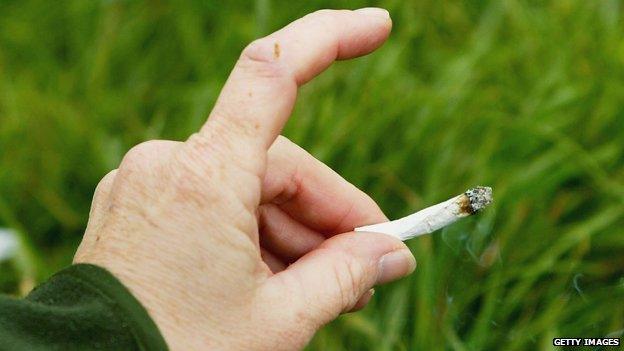Small data: Calculating the sex and drugs economy
- Published

Regular Small Data readers will remember that in April I wrote about the £10bn that prostitution and illegal drugs contribute to the economy, writes Anthony Reuben.
I promised to update you on how they worked that out when the Office for National Statistics (ONS) revealed its methodology, which it did in this article, external last week.
So, it turns out the big difference is that prostitution is measured on the supply side (by looking at how much money prostitutes make) while illegal drugs consumption is measured on the demand side (the amount bought from dealers).
There is consideration of business expenses - the large amounts of electricity needed to grow cannabis and the "rental services, clothing and rubber goods products" (that's condoms to you) required in prostitution.
Extrapolating from research for 2004, the ONS estimates that there were 60,879 prostitutes working in the UK in 2009. Based on Dutch research they assumed that each one serviced 25 clients a week, with an average price per visit of £67.16.
Totting all that up gave an estimate of £5.3bn.
The illegal drugs measured are crack cocaine, powder cocaine, heroin, cannabis, ecstasy and amphetamines.
What's important for the measurement of the national accounts is the margin taken by dealers, except in the case of half of cannabis consumed in the UK, which is assumed to have been grown here.
The ONS took figures for drug sales from a one-off Home Office survey of drug use in 2003, which gave them an average amount of drugs consumed per person. It took retail prices from a UN report and adjusted for purity using evidence from seizures by police and border agencies. Comparing this value with the UN's wholesale drugs prices gives the margin that the ONS is interested in.
Each year's figures for demand are derived from the number of drug users shown in the Crime Survey for England and Wales. That gives a figure for 2009 of £3.6bn for drugs other than cannabis and £830m for cannabis.
Adding that to the £5.3bn from prostitution gives £9.7bn, which is rounded to the £10bn that I discussed in April.
This figure will be backdated into all GDP figures since 1960 when the ONS Blue Book comes out in September.
Illegal drugs will be part of the "retail sales of pharmaceuticals" category, while prostitution will come under "other personal service activities", where it will join activities such as hairdressing, funeral services and keep-fit instructors.
But the ONS warns that there are "significant limitations" in this methodology, which has required "a number of assumptions", such as that there are the same number of prostitutes per male head of the population in London as the rest of the UK and that their services are not used at all by tourists.
Remember that uncertainty next time you are tempted to get excited about a 0.1 percentage point change in economic growth figures.
Follow @BBCNewsMagazine, external on Twitter and on Facebook, external